Black Legion

Brief Synopsis
Cast & Crew
Archie L. Mayo
Humphrey Bogart
Dick Foran
Erin O'brien-moore
Ann Sheridan
Helen Flint
Film Details
Technical Specs

Synopsis
At a midwestern factory, workers speculate about who will fill the opening for plant foreman. Most agree that the job will go to Frank Taylor, who has seniority. That night Frank and his family celebrate, but in the morning, he learns that the job has gone to Joe Dombrowski, a younger man who has invented a time saving device for the plant. When Cliff Summers, another worker, sees how angry Frank is about losing his job to a "foreigner," he suggests that Frank join the Black Legion, a secret organization dedicated to eliminating foreigners from the country. Their first action is to burn down Dombrowski's chicken farm and chase the Dombrowskis out of town. After this, Frank is made foreman, but pressure from the founders of the Legion force him to spend time recruiting new members and he is demoted in favor of his neighbor Mike Grogan. That night, the gang attacks Grogan. Co-worker Ed Jackson, who is married to Grogan's daughter Betty, starts to suspect Frank's connection to all the trouble. He says something to Frank's wife Ruth and when she confronts Frank, his violent reaction drives her away. Frank continues to drink. He loses his job and associates with Pearl Davis, a woman with a bad reputation. When Ed threatens to go to the police, he becomes the next victim of the Legion. Unlike the other victims, though, Ed is not afraid, and when he tries to escape, a panicky Frank shoots him. Frank is then arrested for the murder and Ruth returns from her parents' house to stand by him. The lawyer for the Legion threatens Frank's wife and son in order to stop him from implicating the Legion, but finally, filled with self-loathing, Frank tells the truth. The entire Black Legion is sentenced to life in prison for Ed's murder.

Director

Archie L. Mayo
Cast

Humphrey Bogart

Dick Foran
Erin O'brien-moore
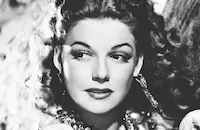
Ann Sheridan
Helen Flint
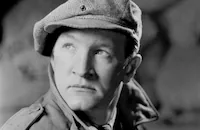
Joseph Sawyer
Clifford Soubier
Alonzo Price

Paul Harvey

Dickie Jones
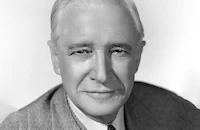
Samuel Hinds

Addison Richards
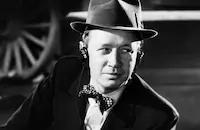
Eddie Acuff
Dorothy Vaughan

John Litel

Henry Brandon

Charles Halton
Pat C. Flick
Francis Sayles
Paul Stanton
Harry Hayden
Egon Brecher

Robert Barrat
Ed Chandler
Robert E. Homans
William Wayne
Frederick Lindsley
Fred Mackaye
Frank Nelson
John Hiestand
Ted Bliss
Larry Emmons
Don Barclay

Emmett Vogan
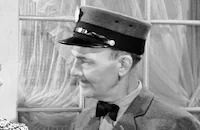
John Butler
Frank Sully
Max Wagner
Carlyle Moore Jr.
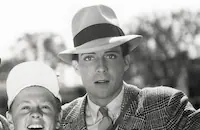
Dennis Moore
Milt Kibbee

Lee Phelps

Wilfred Lucas

Jack Mower
Crew
Milo Anderson
George Barnes
Gene Davenport
Abem Finkel
Robert Haas
William Wister Haines
Fred Jackman Jr.
Bernhard Kaun
H. F. Koenekamp
Robert Lord
Robert Lord
Owen Marks
Frank Mattison
George Nogle
C. A. Riggs
Jack Sullivan
Jack L. Warner

Videos
Movie Clip




Trailer
Film Details
Technical Specs

Award Nominations
Best Writing, Screenplay
Articles
Black Legion
Bogart plays Frank Taylor, an auto worker and family man who becomes enraged when he's passed over for a promotion in favor of an industrious Polish immigrant named Dombrowski (Henry Brandon). Embittered by the experience, Taylor is recruited by the Black Legion, which promotes hatred of foreigners and other races. Taylor's transformation into a brutal racist is a shocking thing to see, because it's genuinely unnerving, and, probably more importantly, because you see it happening to Humphrey Bogart. The character's downfall is eventually all-encompassing, and the studio, much to its credit, didn't tack on an unconvincing happy ending. Considering the era, it was not your typical escapist film fare.
Warner Bros. was, of course, famous for its "ripped from the headlines" brand of filmmaking, and Black Legion was a prime example of the studio's ability to strike while the iron was hot. As already stated, there actually was a white supremacist organization called the Black Legion that had been making headlines throughout 1937, and its story was exceptionally sordid - everything from kidnapping to lynching and murder, with a variety of other atrocities thrown in for good measure. If you read the papers that year, you had heard of the Black Legion.
Still, Warner Bros. knew it could be asking for trouble by releasing a film about the infamous group. One of those much-read newspaper stories included the revelation that the district attorney of Detroit was involved in some of the Legion's activities. And he was still re-elected to office after the news broke. In addition, U.S. courts had recently broadened the scope of what could be viewed as libel, and Warner Bros. had no choice but to tone down the particulars of how the Legion made its money. In Black Legion, instead of getting mixed up with upper echelon politicians, the subversive group simply run guns and swindle their members out of money but much of what's in the picture is still accurate. There's a word-perfect version of the Legion's initiation oath, and the final trial sequence is a re-creation of the confession delivered by the actual person who inspired Bogart's character.
Even after taking a little bit of care to protect themselves, however, Warner Bros. nearly found itself in legal trouble for the bizarre charge of infringing on a KKK copyright! While researching a variety of distasteful organizations, the studio stumbled upon a logo that it felt would look good on the Black Legion's hooded outfits. Unfortunately, the logo they used turned out to be the Ku Klux Klan's official trademark, as covered by United States design patent 68219. Luckily for the studio, a judge threw the case out of court the next year.
Several critics felt that Black Legion would finally turn Bogart into a major star, and said so in their reviews. The role of Frank Taylor was certainly a major step up from his usual job of playing generic heavies, and he attacked it with charismatic gusto. But Warner Bros. was too busy cranking out down-and-dirty genre films to concern itself with promoting another possible star. (Career management was never the studio's strong suit, as evidenced by its legendary mishandling of Bette Davis and James Cagney who were continually given inferior material after proving their star power). Unfortunately, Black Legion, despite its dramatic impact, critical acclaim and Bogart's standout performance, was promoted no differently than any other Warner Bros. assembly line feature. Bogart wouldn't ascend to superstardom until several years later, when he appeared in Raoul Walsh's High Sierra (1941), and, 66 years later, he remains an American icon.
Director: Archie Mayo
Producer: Robert Lord
Screenplay: Abem Finkel, William Wister Haines (based on a story by Robert Lord)
Editor: Owen Marks
Cinematographer: George Barnes
Music: Bernhard Kaun
Costumes Design: Milo Anderson
Cast: Humphrey Bogart (Frank Taylor), Dick Foran (Ed Jackson), Erin O'Brien-Moore (Ruth Taylor), Ann Sheridan (Betty Grogan), Robert Barrat (Brown), Helen Flint (Pearl Davis), Joe Sawyer (Cliff Moore), Henry Brandon (Joe Dombrowski).
B&W-83m.
by Paul Tatara

Black Legion
Black Legion - Humphrey Bogart in the Hard-Hitting Social Drama BLACK LEGION on DVD
Bogart plays Frank Taylor, a blue-collar worker in a machine shop (which was and still is a real shop on the Warner Brothers lot). Taylor's not very educated, but he is a decent and solid worker who does his job well and expects a promotion to foreman. Instead, the job goes to worker named Joe Dombrowski (Henry Brandon), whom the film clearly implies is a Polish Jew. Stunned and depressed, Taylor retreats into himself at home, ignoring his wife and son. Another machinist named Cliff (Joe Sawyer), who had made some racist remarks about Dombrowski, senses Taylor's state of mind and invites him to join a secret group called The Black Legion. At a Legion meeting, a Hitler-esque speaker riles up Taylor and others even more, with talk of "rotten, ungrateful foreigners" and the need to remain "free, white, 100% Americans."
Taylor joins, and is forced to take an oath of allegiance at gunpoint, consigning his soul to the devil for all eternity if he should ever betray the organization. Afterwards, he's made to shell out some bucks for a uniform and revolver. The movie is smart enough to include this - to show not only how repugnant beliefs can prey on the weak-minded and easily manipulated, but also how it's all a scam, a cynical way to make money, which makes it perhaps even worse.
In any case, Taylor is soon wearing a KKK-style hooded uniform and carrying out raids against immigrants and other undesirables, stringing them up to be whipped or forcing them out of town. These scenes are scary and powerful, and the movie as a whole is utterly compelling (which explains why Robert Lord drew an Oscar nomination for Best Original Story.) Eventually, Taylor has second thoughts about his decision but finds it may be too late to do anything about it. His marriage deteriorates, and ultimately the picture becomes about whether Taylor has the spine to make things as right as possible under the circumstances. A final courtroom sequence is superbly written and directed, and Bogart really steps up well here, asked to say one thing and show another.
Even more impressive is the way director Archie Mayo and his studio editor weave in a purely visual "second" story to this sequence: that of Taylor and his wife. Using just camera movement, close-ups and well-timed cuts while Taylor, the lawyer and the judge exchange dialogue about the case, we easily see that what's really going on is the devastation of Taylor's wife, Taylor's self-hatred at having to lie on the stand, his desire to tell the truth and do right by her, and so on; they essentially communicate with each other (and us) by cinematic means, right down to the powerful fade-out. It's the kind of simple storytelling one sees too rarely in movies anymore, and which used to be a normal part of moviemaking even in ordinary studio products like this one.
Erin O'Brien-Moore also deserves credit as Bogart's wife in making that sequence work. Best known (if at all) for this film and The Life of Emile Zola (1937), she is quite appealing and attractive, and a fine actress. Unfortunately her face would be disfigured in a 1939 nightclub fire and her rise to stardom curtailed; she subsequently moved to radio, eventually returning to the screen on television and a few minor movie roles in the 1950s. Also in the cast is a young Ann Sheridan, before she became really famous. She is very charming here in a way that changed noticeably when she was glamorized into "The Oomph Girl."
One of the astonishing things about Black Legion is how bizarrely relevant its depiction of xenophobia is to the America of 2008. Some of today's radio and TV personalities aren't too far off from the kind of demagogic talk that Bogart hears on the radio in this movie: "Hordes of grasping, pushing foreigners are stealing jobs from American workmen and bread from American homes," exclaims the radio host. "It is to combat this peril, to preserve and protect standards of living which have made American workmen the envy of the world, that we the challengers have raised our rallying cry 'America For Americans!'... The real, 100% American, must stop and think. He who is not with us is against us." The radio tirade taps into Taylor's (Bogart's) sense of frustration and anger: "Listen to this guy - he's talking sense," he tells his son while listening. Interestingly, Black Legion is the best known of a mini-spate of similar movies which came out at the time. The others were Legion of Terror (1936) and Nation Aflame (1937).
Warner Home Video's DVD boasts fine picture and sound and comes with appealing extras. The commentary by film historians Anthony Slide and Patricia King Hanson shows they've done their homework and know their stuff. A somewhat bizarre 2-reeler called Under Southern Stars (1937) is a reverential look at Stonewall Jackson's last Civil War battle and his death. Filmed in 3-strip Technicolor, it has pretty good production values and costumes and mixes in some musical numbers. There's also a period newsreel, a great Cab Calloway Vitaphone short, a Porky Pig cartoon, and trailers for Black Legion and The Perfect Specimen (1937).
Black Legion is available by itself or as part of The Warner Gangsters Collection Vol. 3, which also includes Smart Money (1931), Picture Snatcher (1933), Lady Killer (1933), The Mayor of Hell (1933) and Black Orchid (1940). There is no question that it is a better value and totally worth it to get the entire collection. These are very strong movies and they all come with many entertaining extras. Warner Home Video continues its excellent job of packaging and releasing its classic movie collection. Only a few weeks ago the label released its Forbidden Hollywood Collection Vol. 2, a set of pre-Code films and another gem for movie lovers. Most of the titles in this Gangster collection are also pre-Code. Together, the sets should provide several weeks' worth of first-class home entertainment.
For more information about Black Legion, visit Warner Video. To order Black Legion, go to TCM Shopping.
by Jeremy Arnold
Black Legion - Humphrey Bogart in the Hard-Hitting Social Drama BLACK LEGION on DVD
Quotes
Trivia
The movie was inspired by a real case involving the Black Legion in Michigan, where a WPA worker was killed.
Notes
Actor Clifford Soubier, who portrays Mike Grogan in the film, had been an NBC broadcaster working out of Chicago. According to the Warner Bros. Collection in the USC Cinema-Television Library, Robert Homans was at one time considered for the part of "Grogan." Memos in the files note that executive producer Hal B. Wallis had suggested Edward G. Robinson for the lead, but producer Robert Lord objected on the grounds that Robinson looked too foreign. He felt they needed a "distinctly American looking actor to play this part." According to a memo dated 10 August 1936, Paul Graetz and Joseph Crehan were signed for roles, but their participation in the final film has not been determined. A memo from Lord to Wallis indicates that Glenda Farrell was considered for the part of "Pearl." Outdoor scenes were shot at the Warner Ranch, Calabasas, CA and the Providencia Ranch, Universal City, CA. The Taylor and Grogan homes were shot on location in Hollywood, CA.
The film, which was made for a total cost of $235,000, was inspired by an actual case involving the Black Legion in Michigan, the May 1935 murder of WPA worker Charles Poole. Dayton Dean, the Legion executioner, turned state's evidence at the trial. According to a New York Times article about the film, the Legion's "stock in trade is blatant 'Americanism' coupled with persecution of those differing in economics and racial viewpoints....a sort of 'America for Americans' jehad in which native-born labor was to carry the banner-and take the risks." According to Hollywood Reporter, The Ku Klux Klan sued Warner Bros. for patent infringement for alleged use of the Klan's patented insignia of a white cross on a background of red with a black square. On screen credits list Helen Flint's character as "Pearl Davis," but some contemporary reviews call her "Danvers," the name which she is called in the film. Onscreen credits and contemporary reviews call Joseph Sawyer's character "Cliff Moore," but he is called "Cliff Summers" in the film. Robert Lord received an Academy Award nomination for original story and the National Board of Review chose it as best film for 1937 and named Humphrey Bogart best actor. In 1936, Columbia made Legion of Terror, the first film to be based on the Black Legion killing (see AFI Catalog of Feature Films, 1931-40 F3.2450).

Miscellaneous Notes
Released in United States 1936
Released in United States 1936














